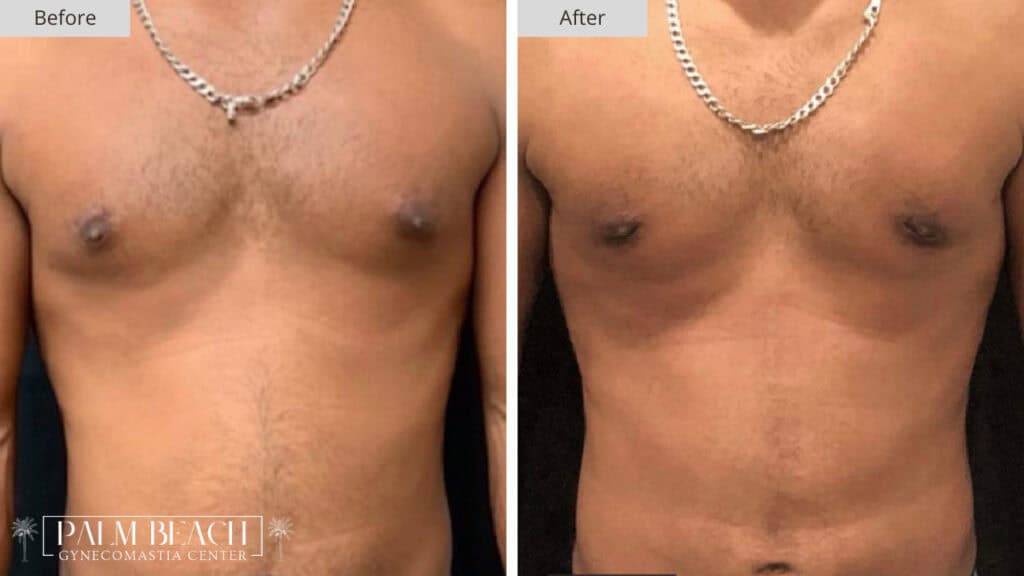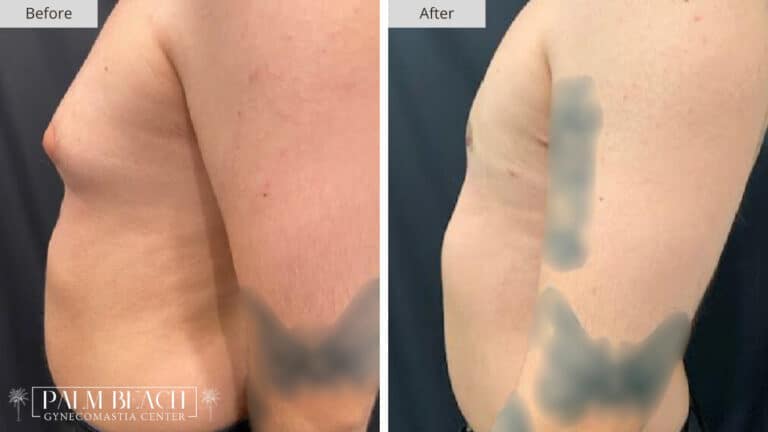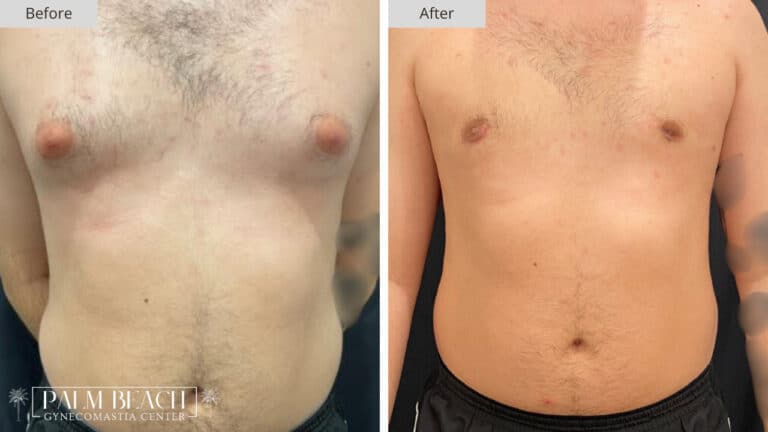When this young male patient first visited the Palm Beach Gynecomastia Center, his concern was one that we hear frequently but never take lightly. Despite being lean, active, and in otherwise excellent health, he struggled with the presence of excess tissue in his chest.
Even with a toned abdomen and well-defined arms, the fullness in his chest stood out. The tissue wasn’t soft fat that might respond to exercise. It was firm, centralized beneath the areola, creating a rounded, slightly puffy appearance. This was classic glandular gynecomastia, and it was not going to improve without surgical intervention.

The Emotional Impact
Activities like swimming, working out without a shirt, or even dressing for a night out came with hesitation. He had tried changing his diet, adding chest exercises, and adjusting his posture but nothing worked. This was not a matter of effort. It was anatomy.
Many men in his position feel isolated, unsure whether what they are experiencing is normal or something they can fix. At the Palm Beach Gynecomastia Center, part of our mission is to remove that uncertainty and offer clarity, compassion, and solutions.
Surgical Evaluation and Plan
During the consultation, we confirmed that the fullness was due to excess glandular tissue, with little to no fat involved.
His chest skin was tight and elastic, meaning no additional tightening procedures would be required. Since the issue was centralized, we recommended direct gland excision through a small incision at the lower edge of the areola.
This technique is designed to:
- Remove the dense tissue that cannot be addressed through excision
- Minimize trauma to the surrounding area for quicker healing
- Place the scar in a natural transition point to ensure long-term discretion
The procedure would be performed under local anesthesia with mild sedation. No drains would be needed, and recovery would be relatively quick.
Surgery and Immediate Outcome
The surgery went exactly as planned. We carefully removed the glandular mass through a single, curved
incision along the inferior border of each areola. Care was taken to sculpt the area and leave a smooth contour beneath the skin to prevent indentations or irregularities.
Immediately post-op, the difference was dramatic. The projection was gone. The chest had a flatter, firmer shape that aligned with the rest of his athletic build. The incision was nearly invisible even at this early stage, blending seamlessly into the natural pigmentation and curvature of the areola.
Recovery and Final Results
In the first few days, the patient experienced mild swelling and soreness, which were well managed with
standard post-operative care. A compression garment was worn to support the new contour and help reduce fluid buildup.
Within one week, he had resumed light activity. By the end of the third week, he reported feeling significantly more confident and ready to return to his normal routine.
At six weeks, the scar was already fading and the results had stabilized. The shape of his chest looked
completely natural – flat, balanced, and athletic. Most importantly, he reported feeling more at ease in his body. He no longer worried about what his chest looked like in photos or in the mirror.
A Stronger Outlook
This case demonstrates the powerful psychological and physical transformation that can occur when
gynecomastia is properly diagnosed and surgically addressed. The patient did not need liposuction or skin tightening. He needed precision, expertise, and a tailored approach.
At the Palm Beach Gynecomastia Center, we are committed to providing just that. For men with firm, persistent glandular tissue that does not respond to fitness or lifestyle changes, surgical gland excision remains the gold standard. When performed with care, the results are not only visible, they are life-changing.



